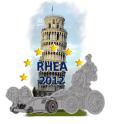RHEA International Conference on Robotics
Odense & Struer 2012-06-20
Syddansk Universitet og Conpleks Innovation har udarbejdet en forskningsartikel til “First RHEA International Conference on Robotics and associated High-technologies and Equipment for Agriculture” som afholdes i Pisa Italien i midten af september i år. Conpleks Innovation har i den sammenhæng gennemført flere tests af avanceret GPS udstyr. Nedenfor kan du læse artiklens abstract mv. Ønsker du yderligere oplsyninger, eller vil du gerne tale med os om vores RoboTech aktivieter, er du meget velkommen til at kontakte Tom Simonsen tom.simonsen@conpleks.com. Vil du vide mere om selve konferencen så klik her: www.rhea-conference.eu/2012/
Details:
Jensen K., Larsen, M., Simonsen, T. and Jørgensen, R.N. Evaluating the performance of a low-cost GPS in precision agriculture applications. First RHEA International Conference on Robotics and associated High-technologies and Equipment for Agriculture. September 19-21, 2012, Pisa, Italy.
Abstract:
Field Robots are often equipped with a Real Time Kinematic (RTK) GPS to obtain precise positioning. In many precision agriculture applications, however, the robot operates in semi-structured environments like orchards and row crops, where local sensors such as computer vision and laser range scanners can produce accurate positioning relative to the crops. GPS is then primarily needed for robust inter-row navigation.
This work evaluates a new low-cost GPS. Static tests were used to test the absolute accuracy. To test the GPS in a precision agriculture environment it was installed on a robot driving in a simulated row crop field. The GPS supports raw data output as well and similar experiments were performed to evaluate the GPS when used in a RTK setup.
In field tests more than 95% of the position errors were estimated to be within 2.6 m. In RTK field tests more than 95% of the position errors were estimated to be within 0.2 m. It was concluded that the GPS can be applied to selected applications in row crops and orchards if augmented by local sensors and mapping techniques. Using the GPS in a RTK setup applies to general applications where position errors of 0.2 m are acceptable.
